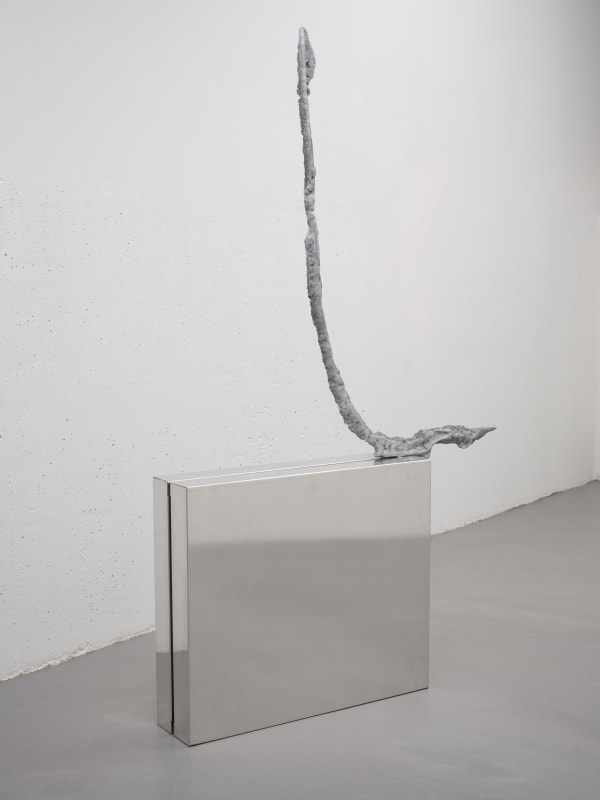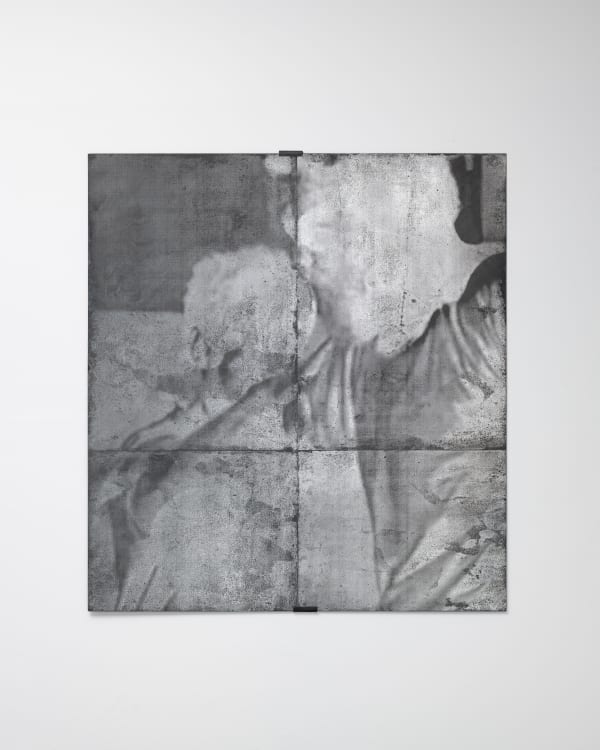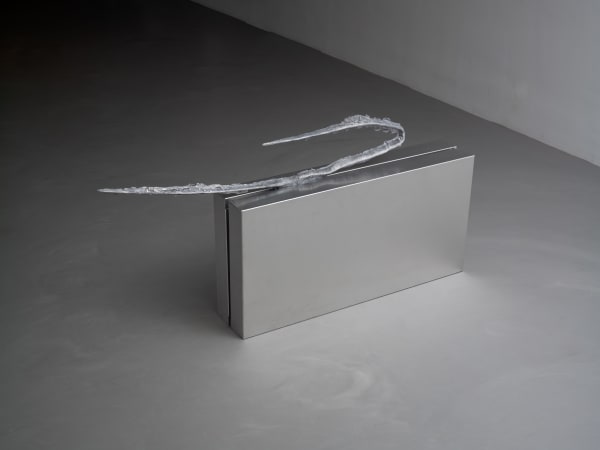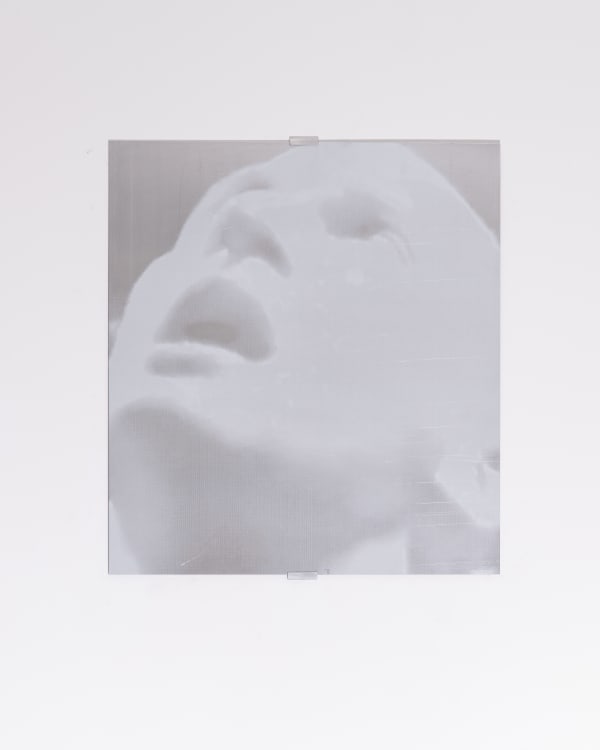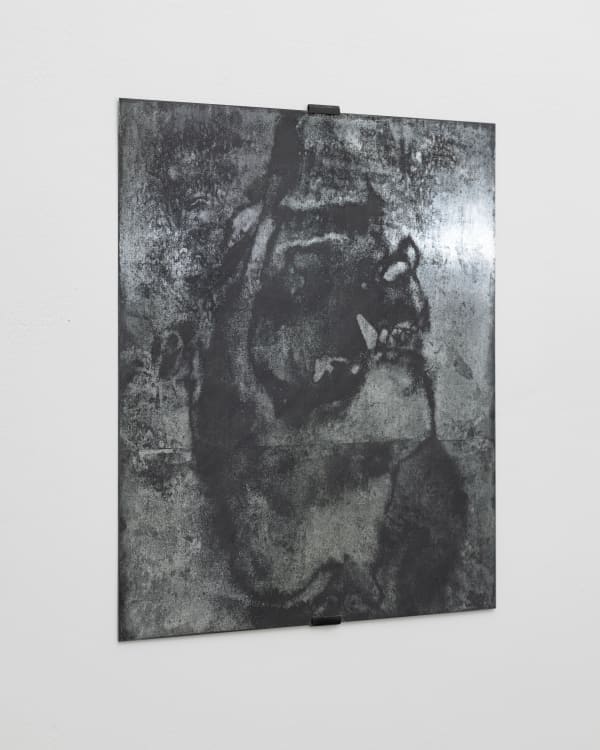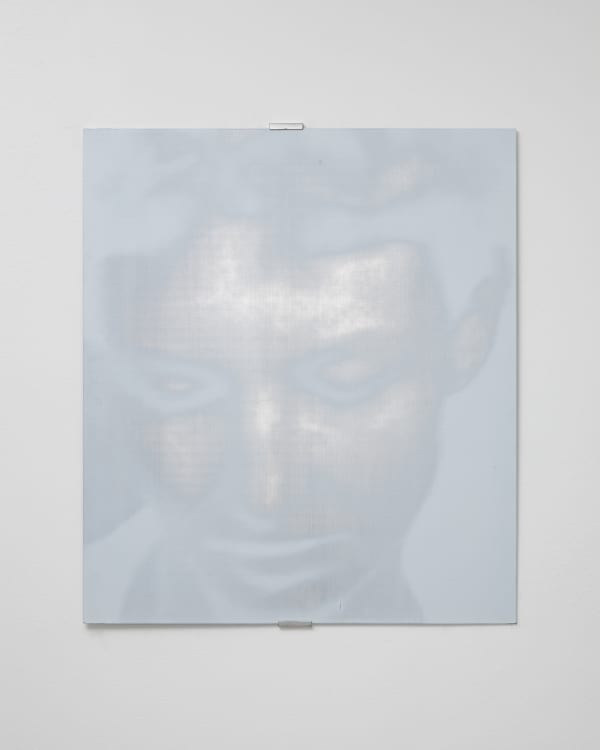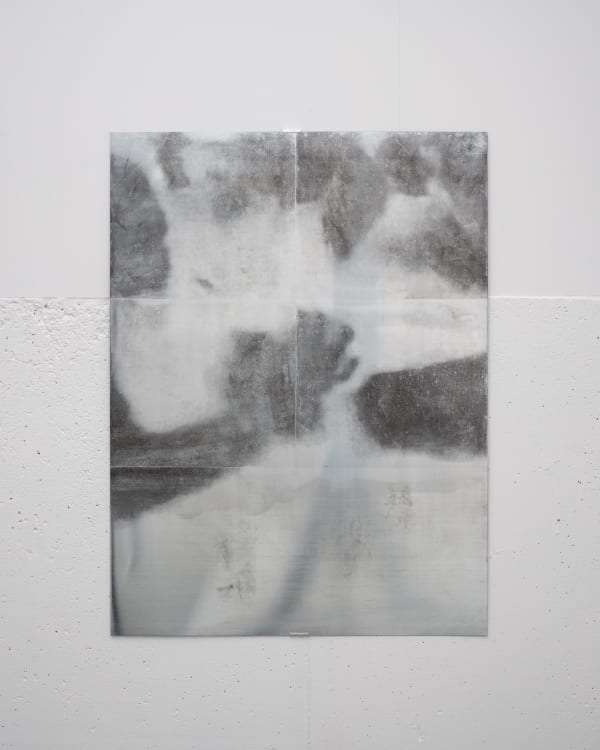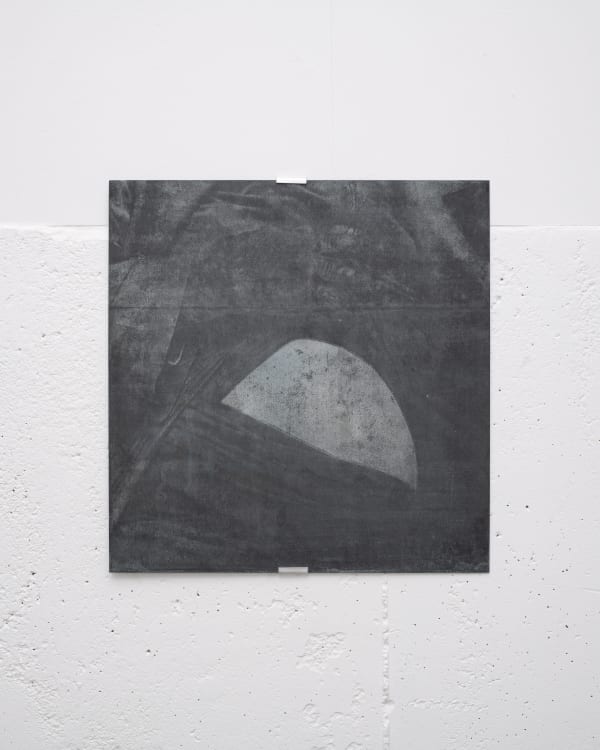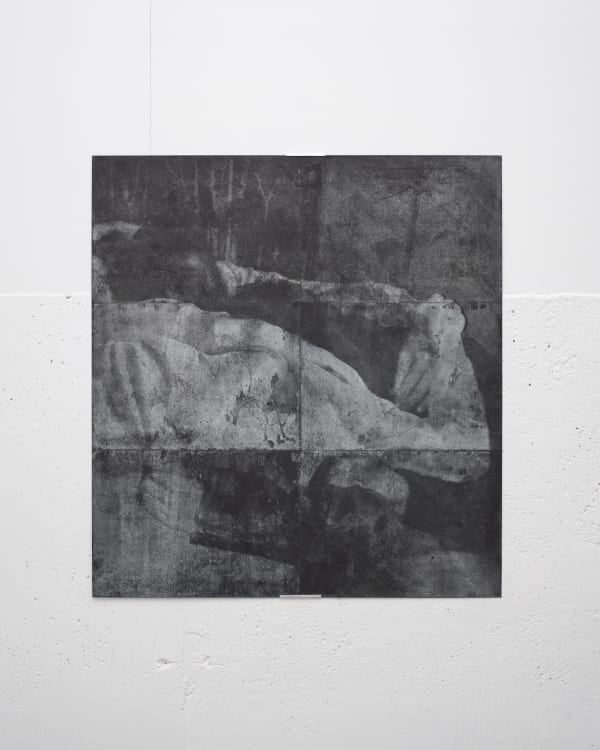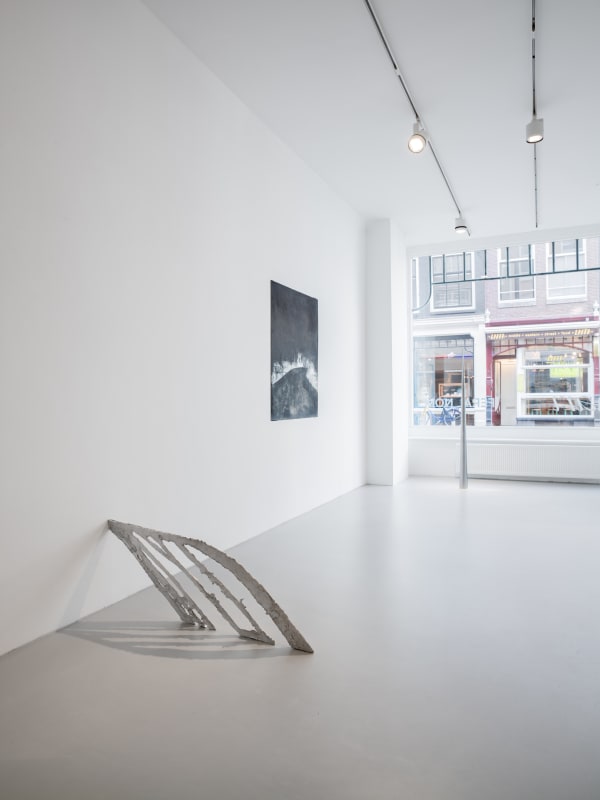FERAL NOM: Dimitris Tampakis
-
OverviewDimitris Tampakis’ solo exhibition FERAL NOM explores the hybrid human experience in an anesthetized society, navigating discomfort and seeking existential awakening. His work reflects moments of tension and vulnerability, where profound change emerges through chaos and uncertainty. Utilizing materials like aluminium, oxidized zinc, leather, and rubber, Tampakis creates confronting and edgy sculptures and installations. His latest body of work examines the concept of the tribe as a response to digital-age alienation, focusing on fading connections and cracks in routine. These cracks symbolize liberation, revealing opportunities for collective action and transformative experiences.Under the framework of FERAL NOM, Dimitris Tampakis envisions renewal through fragmentation. Cracks in the system are not just flaws but openings—revealing its weaknesses while unleashing raw, untamed energy. Within these gaps, individuals reclaim their bodies as tools of spontaneous expression, liberated from the constraints of consumerism. Their connection is forged through shared vulnerability and defiant acts, rejecting control and rigid ideologies in favour of a more profound, instinctive unity.For Tampakis, transformation is neither clean nor linear. It dismantles shallow identities and artificial constructs, exposing unfiltered connections beyond systems of profit or power. Trust becomes the foundation of this way of being, and risk is the only constant. His work embraces this leap into the unknown, where instability transforms into strength, and unpredictability becomes the essence of life. To Tampakis, cracks and chaos are not threats but opportunities to reimagine and rebuild. The light spilling through these fractures symbolizes abandoned identities and unmet desires, glowing with the potential for destruction and renewal. His work highlights the fragility of systems that suppress chaos while celebrating the life force that emerges from within.Tampakis’ artistic practice is deeply experimental, blending photography, printmaking, and sculpture. He works with photographic prints on metal, using old printmaking etching techniques to transfer images onto zinc sheets through a chemical process. This approach merges precision with unpredictability, as the exposure time to acids unexpectedly alters the final image. The black surfaces in these works are not created with ink but result from material burned by acid, forming distinct and dynamic visual textures. Light plays a crucial role in these pieces, interacting with the reflective metal surfaces to create shifting images that change depending on the viewer’s position and environment.His sculptures extend this engagement with metal, primarily using aluminium, which he manipulates through bending or casting techniques. His metal casting process involves pouring molten metal into fireproof plaster moulds, embracing the inherent unpredictability of this method. Because metal flow into the mould cannot be completely controlled, accidental formations emerge—imperfections that Tampakis incorporates rather than corrects. This reinforces the uniqueness of each piece, ensuring that no two works can ever be identical. Light’s interaction with the metal amplifies this sense of continuous transformation, making each piece feel alive and in flux.In Tampakis’ vision, the tribe’s connection transcends the polished surfaces of modern life. Rather than being defined by lineage or tradition, this imagined tribe emerges from shared experience, trust, and a belief in the unexpected. Inspired by neo-tribal theory, it represents a fluid, experience-driven collective bound by mutual reliance rather than imposed order. This neo-tribe rejects the sterile confines of modernity, where control and commodification strip relationships of depth. Instead, it embraces chaos as a generative force, where uncertainty is not feared but becomes the foundation for trust.FERAL NOM serves as the meeting ground for this evolving collective, a place where security is not engineered but arises organically, shaped by the willingness to surrender to the unknown. Each shared action—whether a physical movement, an unspoken gesture, or an act of collective risk—reinforces their interdependence, creating a visceral rather than institutional form of belonging. The exhibition space itself becomes a site of transformation, where bodies reclaim their agency and instincts dictate interaction. The tribe forms in real-time, its presence felt in the tension between destruction and creation, control and surrender.Through FERAL NOM, Tampakis reclaims the “feral” as a space of raw presence and instinctive wisdom. This feral trust is not about reverting to the past but about transformation—reconnecting with the body’s natural rhythms. The group finds its flow in shared movements and unspoken understandings: instinct over logic, trust over certainty. Tampakis celebrates this journey as a tribute to life’s vibrant unpredictability, where chaos lays the foundation for deeper connections and creative transformation. The imprints left behind—whether a cast fragment of an ephemeral gesture or the echo of an unrestrained movement—become traces of a deeper, unmediated connection, evidence of a world built on shared vulnerability. This imagined tribe is not a nostalgic return to a lost past but a radical reconfiguration of how we relate to one another. In the luminous cracks of the system, they find renewal, proving that the wild is not an escape but a necessary reinvention—one where existence is defined not by fixed roles but by the primal rhythm of trust, risk, and raw presence.
-
Works
-
 Dimitris Tampakis, You asked me what's my pleasure, 2025
Dimitris Tampakis, You asked me what's my pleasure, 2025 -
 Dimitris Tampakis, But there's a voice in the distance quiet and clear, 2025
Dimitris Tampakis, But there's a voice in the distance quiet and clear, 2025 -
 Dimitris Tampakis, Meet me, meet me at the turnstile, 2025
Dimitris Tampakis, Meet me, meet me at the turnstile, 2025 -
 Dimitris Tampakis, And now we stare up from our hole, 2025
Dimitris Tampakis, And now we stare up from our hole, 2025 -
 Dimitris Tampakis, Approaching the zero point, 2025
Dimitris Tampakis, Approaching the zero point, 2025 -
 Dimitris Tampakis, Barely grieving, 2025
Dimitris Tampakis, Barely grieving, 2025 -
 Dimitris Tampakis, Loving every second, every moment, every scream, 2025
Dimitris Tampakis, Loving every second, every moment, every scream, 2025 -
 Dimitris Tampakis, Not feeling the same, 2025
Dimitris Tampakis, Not feeling the same, 2025 -
 Dimitris Tampakis, On a cracked generator, 2024
Dimitris Tampakis, On a cracked generator, 2024 -
 Dimitris Tampakis, Ruin me, 2025
Dimitris Tampakis, Ruin me, 2025 -
 Dimitris Tampakis, She sought cracked pleasures, 2024
Dimitris Tampakis, She sought cracked pleasures, 2024 -
 Dimitris Tampakis, Sublime breakdown, 2025
Dimitris Tampakis, Sublime breakdown, 2025 -
 Dimitris Tampakis, Their hands were fast as a wolf, 2025
Dimitris Tampakis, Their hands were fast as a wolf, 2025 -
 Dimitris Tampakis, Didn't used to be so needy, 2024
Dimitris Tampakis, Didn't used to be so needy, 2024 -
 Dimitris Tampakis, Lion woman with the crooked smile, 2025
Dimitris Tampakis, Lion woman with the crooked smile, 2025 -
 Dimitris Tampakis, Not by blood, but by pure trust, 2025
Dimitris Tampakis, Not by blood, but by pure trust, 2025 -
 Dimitris Tampakis, P.P., 2022
Dimitris Tampakis, P.P., 2022
-
-
Contact Form
Send me more information on FERAL NOM
-

-
Installation Shots


